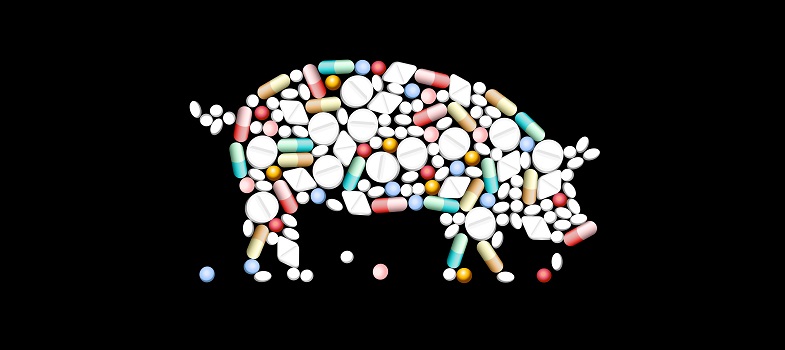1.3 AMR surveillance data
1.3.1 Types of AMR surveillance data and their uses
AMR surveillance can involve collecting various types of data. Table 1 shows the different types of data that can be obtained in animal production systems (previously introduced in the module Antimicrobial resistance in animals). The different types of data provide different information about how to address AMR and consequently have different uses.
| Type of data | Point of data collection | Sources | Information uses | |
|---|---|---|---|---|
| Resistant bacteria and | Farms | Diseased animals | Clinical samples: animal faeces, milk, fish, etc. | Control animal diseases |
| Healthy animals | Pooled samples of faeces, bulk milk, fish, pond water | Understand transmission dynamics of AMR emergence, sources of AMR, trends, transmission | ||
| Feed mill | Feed | Investigate contamination of feed with bacteria, e.g. Salmonella spp. | ||
| Food chain, post-harvest: abattoir, markets, retail | Products: meat carcasses and products, bulk milk, eggs, fish | Understand dynamics of pathogenic and commensal AMR bacteria, transmission; risk to public health | ||
| Environment: manure tank, water sources, pond | Water, soil, manure | Understand dynamics of AMR transmission | ||
| AMU data | Farm | Records: AMU | Assess AMU and understand its effect on AMR | |
| AMC data | Industry, customs | Records of sales and imports data | Proxy for AMU data | |
| Antimicrobial residues data | Farm | Animal products, such as milk | Compliance with withdrawal periods | |
| Food chain | Animal products: carcasses, milk, eggs, fish | Compliance with export requirements | ||
| Environment | Water, manure, sediment, soil | Understand dynamics of AMR transmission | ||
The types of data described in Table 1 are useful in themselves, but can also be combined to provide information that is more valuable. For example, data on the prevalence of resistant bacteria present on a farm could be analysed alongside AMU records to look at the impact of AMU on AMR. Another approach would be to compare data from different sample types, such as manure from poultry farms and pond water, and sediments from fish farms, to explore possible transmission of resistant bacteria.
1.2 Types of surveillance



